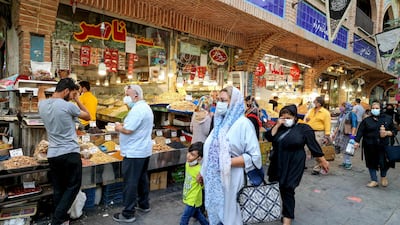In a political landscape marked more often by rupture than rapprochement, even the thinnest sliver of diplomatic thaw can provoke a flurry of market curiosity. So when Iran’s president recently stated that the country would welcome American investors if a nuclear agreement is reached, it jolted dormant questions about the future of US-Iran economic ties.
For now, nothing tangible has changed. US sanctions on Iran remain firmly in place – in fact, some have recently been expanded – and while diplomatic contacts are reportedly under way, they remain cautious and indirect.
As of now, the idea of formal US-Iran commercial engagement remains hypothetical at best, contingent on future breakthroughs that have yet to materialise.
But the fact that Tehran has publicly invited American investors – contingent on a nuclear agreement – and that Washington has not dismissed the overture, instead proceeding with diplomatic talks, raises a question too tempting to ignore: under what conditions could the US and Iran actually trade again?
The blunt reality is that nearly all meaningful trade between the two countries is currently illegal. Sanctions, many enshrined in US law, restrict the movement of goods, capital and services. Lifting them would require formal legislation passed by Congress. And in today’s political environment, where bipartisan consensus is rare and Iran remains a deeply divisive issue on Capitol Hill, the odds of such legislative action are slim.
That said, not all trade requires a full repeal of sanctions. The US president can authorise narrowly defined exchanges through executive waivers, while humanitarian trade – including food, medicine and medical devices – is permitted under existing exemptions. These mechanisms offer limited but real pathways for engagement, even within the broader constraints of the sanctions regime.
Think agricultural commodities, medical supplies or civil aviation components. Under the Joint Comprehensive Plan of Action (JCPOA) – the 2015 nuclear accord between Iran and world powers – specific regulatory carve-outs allowed for limited trade in these areas. But the framework proved politically fragile, unravelling after the US withdrew from the deal in 2018.
If sanctions did soften, even marginally, what would be the point – and for whom?
From Washington’s perspective, only a few sectors offer real strategic interest. Energy remains the most geopolitically significant – Iran holds some of the world’s largest oil and gas reserves. If sanctions were eased and Iranian exports returned at scale, that additional volume would likely put downwards pressure on prices in the short term – aligning with the Trump administration's economic agenda.
That said, current US policy remains focused on restricting Iranian energy exports, not integrating them.
Agriculture and basic commodities have historically been allowed under humanitarian exemptions, and while they could feature in limited trade scenarios, they are more likely to function as diplomatic concessions than economic priorities.
For Iran, the wish list extends beyond goods: while advanced technology, industrial equipment and certain pharmaceuticals remain high priorities, the deeper goal is access to global financial systems – US dollars, markets and capital flows. This kind of re-engagement would signal a structural economic reopening, not just a transactional exchange.
Private sector interest, particularly from US multinationals, could materialise quickly if sanctions were eased. Despite the risks posed by continuing restrictions, there are significant opportunities, especially in sectors such as energy, technology and infrastructure.
However, the real question is whether Washington’s political and strategic priorities would permit such economic engagement, given the broader concerns about Iran’s nuclear activities and regional influence.
Of course, all of this unfolds under a second Trump administration – a factor that complicates, but does not entirely foreclose, the conversation.
President Donald Trump’s foreign policy instincts are famously transactional. If a deal can be framed as tougher, richer, or more “America First” than its predecessor, there’s at least theoretical room for engagement.
Iran may be gambling that its outreach – thinly veiled though it is – will appeal to this mindset. A narrowly crafted, heavily branded “Trump Deal” could offer Iran selective economic access in exchange for nuclear restraint or regional de-escalation.
Tehran’s overture may ultimately be more about optics than tangible outcomes, given the domestic pressure from a weakened rial and simmering dissatisfaction in the country. The remarks could be an attempt to project pragmatism both to external investors and domestic factions. Iran never chose isolation; it was imposed by sanctions and political pressure.
However, the challenge for Tehran is convincing global capital that the US is a reliable partner, given the unpredictability of American foreign policy, particularly after the Trump administration’s recent tariff blitz. The US’ erratic shifts in policy will make it hard to convince Iran, and potentially others, that it can be a stable and trustworthy partner.
For all the chatter, the fundamentals haven’t changed. Sanctions remain intact. Trust is in short supply. And the domestic political cost of re-engaging with Iran remains high for any US administration – Trump’s doubly so.

